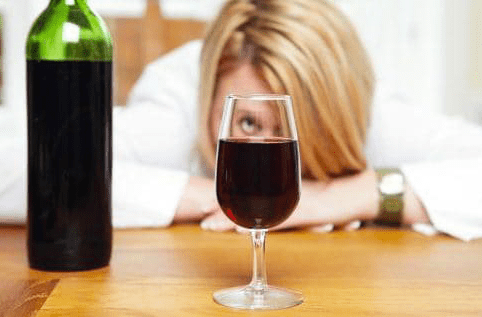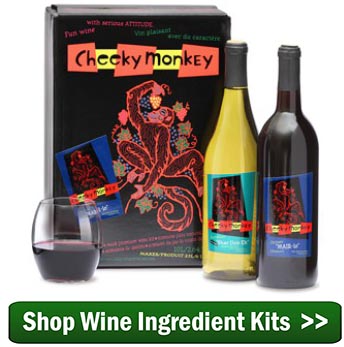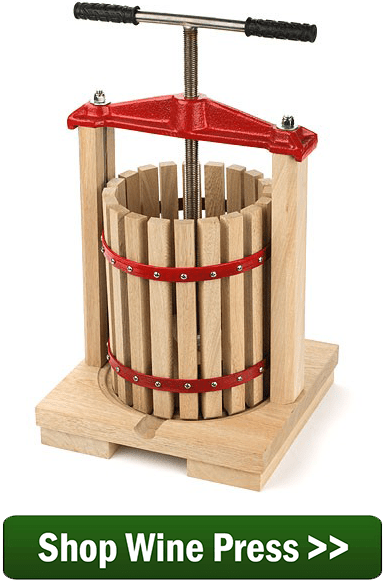 One of the more common questions we get asked by beginning winemakers is, how long does it take to make wine? And most often they begin to show signs of excitement after we explain to them that it does not take nearly as long to make as they think to make a good batch of wine. In fact, it is very possible to have a wine bottled within a month from the time you begin the wine making process.
One of the more common questions we get asked by beginning winemakers is, how long does it take to make wine? And most often they begin to show signs of excitement after we explain to them that it does not take nearly as long to make as they think to make a good batch of wine. In fact, it is very possible to have a wine bottled within a month from the time you begin the wine making process.
Once the wine has been bottled there are some benefits to aging, but a remarkable amount of the improvement can be obtained within the first 30 to 60 days of bottle aging, so it is possible for you to have a very delectable wine within 2 to 3 months from the time you start making wine.
How long it actually takes to make wine depends on what you are using to make the wine. Are you making your wine from grapes? Are you making you wine from fruits? Are you making your wine from wine ingredient kits?
Packaged wine making juices tend to make wines faster than making wine  using fresh fruits. This is primarily because there is no pulp or skins involved. The concentrated juices clear up much faster, allowing the wine to be bottled much sooner. Wine ingredient kit have there own wine making recipes included with them, so it makes it a good option for the first-time winemaker.
using fresh fruits. This is primarily because there is no pulp or skins involved. The concentrated juices clear up much faster, allowing the wine to be bottled much sooner. Wine ingredient kit have there own wine making recipes included with them, so it makes it a good option for the first-time winemaker.
So, How Long Does It Take To Make Wine?
Here is an overview of what to expect based on what is being used to make the wine:
- Winemaking Ingredient Kits:
 If you are making a wine from one of our winemaking ingredient kits you will be bottling your wine in about 4 to 6 weeks, depending on which brand of wine making kit you are using.
If you are making a wine from one of our winemaking ingredient kits you will be bottling your wine in about 4 to 6 weeks, depending on which brand of wine making kit you are using.
- Winemaking Caon Concentrates:
When using winemaking can concentrates such as SunCal, Alexander or Country Fair, you will be bottling your wine in 6 to 10 weeks.
- Fresh Fruits:
Because of the pulp involved, it takes longer to make wine using fresh fruits or grapes than it does using packaged juices. Aging can take a little more time as well because of the higher level of tannins and other proteins that are typically in the wine must from the fresh fruit. You can expect to be bottling your wine in about 8 to 12 weeks from the time you started the batch, and also anticipate needing to bottle age the wine at least 3 to 4 months, and sometimes up to a year, depending on the fruit.
The amount of time it takes to make a batch of wine can vary somewhat based on the scenario, but all in all, the time needed is usually less than expected. Start off with one our California Connoisseur ingredient kits, and you’ll be drinking wine in 28 days. Or, maybe you have some fresh fruit growing out back. In that case you may want to get our Your Fruit! Necessities Box. Wine making recipes are included.
—–
Ed Kraus is a 3rd generation home brewer/winemaker and has been an owner of E. C. Kraus since 1999. He has been helping individuals make better wine and beer for over 25 years.

How long does it take to make jail house wine
Lawrence, I am sorry, we do not have any information on making jail house wine.
7 to 14 days depending on sugar content, usauly the sugar content comes from the fresh fruits used , since inmates can’t get ahold of pure sugar!
I think your correct about the wine yeast is better. I make wine from juice such as Welch’s and I used baking yeast the last few times and it just doesn’t taste right. I’ll go back to wine yeast. The juice wines don’t have much body to them. I started using more juice and less water and sugar, hoping I would get a better wine, but it didn’t work. I used nine 64 oz bottles and added the sugar and water to start at 22 percent balling but it wasn’t very good, but as I said I used baking yeast. I would appreciate any suggestions. Thanks very much, Jeff
Jeff, I’ve been making all sorts of fruit wines for many years. You need to watch what kind of bottled juices you use. Many of them have sorbates or other preservatives in them that can really mess up the yeast growth and function if not kill it off completely. Always check the labels for “NO Preservatives Added”. Personally, I mainly use fresh fruit and frozen concentrates (12 oz. cans). I’ve had great luck with the Old Orchard brand. They carry a lot of different flavors to choose from. Their website will show what they have and what store carries them in your area. Out of near 60 different fruits and combinations I have made wine out of, one of my favorites is Pomegranate/blueberry/cherry mixed from 2 different ones from Old Orchard. I prefer the Red Star Cote de Blanc (green package) for most of my fruit wines. Best of Luck! Tom
Would using a pail of wine juice be about the same time frame as using fresh fruit? Thanks
Sue, as long as it contains the appropriate nutrients, the fermentation process would be the same.
I made some apple wine the first part of October and a pear wine a couple of weeks later. The apple wine is clear and ready to bottle. The pear wine, however, has still not cleared. I think I need to rack it off and add some bentonite. Any ideas to help clear it up?
Betty, the first thing I would do if you haven’t already is take a hydrometer reading to confirm that the fermentation is complete. The wine will not clear if it is still fermenting. If the fermentation is complete, you may have a pectin haze. Pear wine is susceptible to develop a pectin haze. The article posted below will tell you how to treat a wine with a pectin haze.
Pectin Haze
http://www.eckraus.com/blog/clear-pectin-haze-pectic-enzyme
I really appreciate the insight from the information on this site. My family has been making wines has been making wines for 3 generations. Some of my family were distillers years ago. I am currently using a recipe that my dad received from a friend who got the recipe in Jerusalem in the 1960’s. This recipe is supposed to be about 2,000 years old. I have had great success with this recipe with total ABV of 17 to 20%. Absolutely beautiful nose, great legs with no added glycerin and amazingly, no hangover, unless you drink a gallon or more. The flavors have been unbelievable. Fruity, earthy tones, very deep bodied wines. This is a truly organic product, with no yeast nutrients, no added anything. Bottle aged, it takes on a whole new complexity. I served some to friends over Christmas and they couldn’t believe I made the wine. Many of them, a couple who are true oneophiles, said it was the best they have ever had.
I have pushed fermentation to a very drinkable wine to as little as three weeks. It requires very precise monitoring, but it is possible. But you have to be dedicated to the craft.
Someone mentioned jailhouse hooch. Whatever fruit you use it has to be high sugar content, you need about a pound of fruit and one pound of sugar per gallon of water. Use 1 Tablespoon of either distillers yeast or Turbo Yeast per gallon. Proof your yeast first. Depending on temperature, you will have hooch in 24 to 72 hours. Rack and strain it well. It will be very sweet and probably yeasty. But it will be alcohol, if that is what you are looking for.
My wine which I make from fresh fruits is bottled within a month, does this sound right?
I use a bucket with a fruit straining bag for primary fermentation, I then strain and squeeze every last drop of juice. Leave to settle for about 8 hours before racking and putting in the airlock.
Then about 2.5 weeks for secondary fermentation, then rack leaving all the sediment behind and using a vacuum to degas. To be honest it’s usually clear at this point and ready to bottle.
I’m still aging my wine so can’t say if it’s any good yet….
An I missing anything?
Euan, as long as the fermentation is complete, the wine is clear and degassed I see nothing wrong with what you are doing.
Euan, as long as the fermentation is complete, the wine is clear and degassed I see nothing wrong with what you are doing.
Have you or anyone else out there ever heard of making wine out of fresh sweetcorn and if so can you share a good recipe.
I have taken one swish off of a rum barrel and filled it with apple juice on November 1st; Installed a spigot and drove in the bung. Turned the tap January 1st. and had a beautiful, clear and addictive apple wine. The old timers tell me to throw in a steak, or two, to reduce the acidity. Problem: the wine goes to vinegar about the middle of February. Bottling makes the first bottle almost unpalatable, after that it doesn’t matter. How can the turning to vinegar be stopped other than to throw large parties? For me it does not matter as the distillery in our area has been closed and the barrels are no longer available. For those of you who can get the barrels, have one for me.
Once the wine surface area starts to become larger, you are exposing the wine to more air contact within the barrel. This is what promotes vinegar production. You can add both sulfites such as potassium metabisulfite and potassium sorbate. This will help the wine to last a little longer, but it will eventually turn to vinegar. You would not want to add either of these until the apple wine was done fermenting. If you had a way keeping the barrel topped-up… say with glass marbles for example, and you use both sulfites and sorbate after the fermentation, then you might have a shot of keep the wine fresh until all gone.
The other issue here is that apple juice will only produce about 5% to 7% alcohol with the natural sugars in the juice. A higher alcohol level would help to preserve the wine as well. Add cane sugar to the wine to shoot for an alcohol level between 9% to 13%. The would be on average about 1 pound of sugar per gallon.